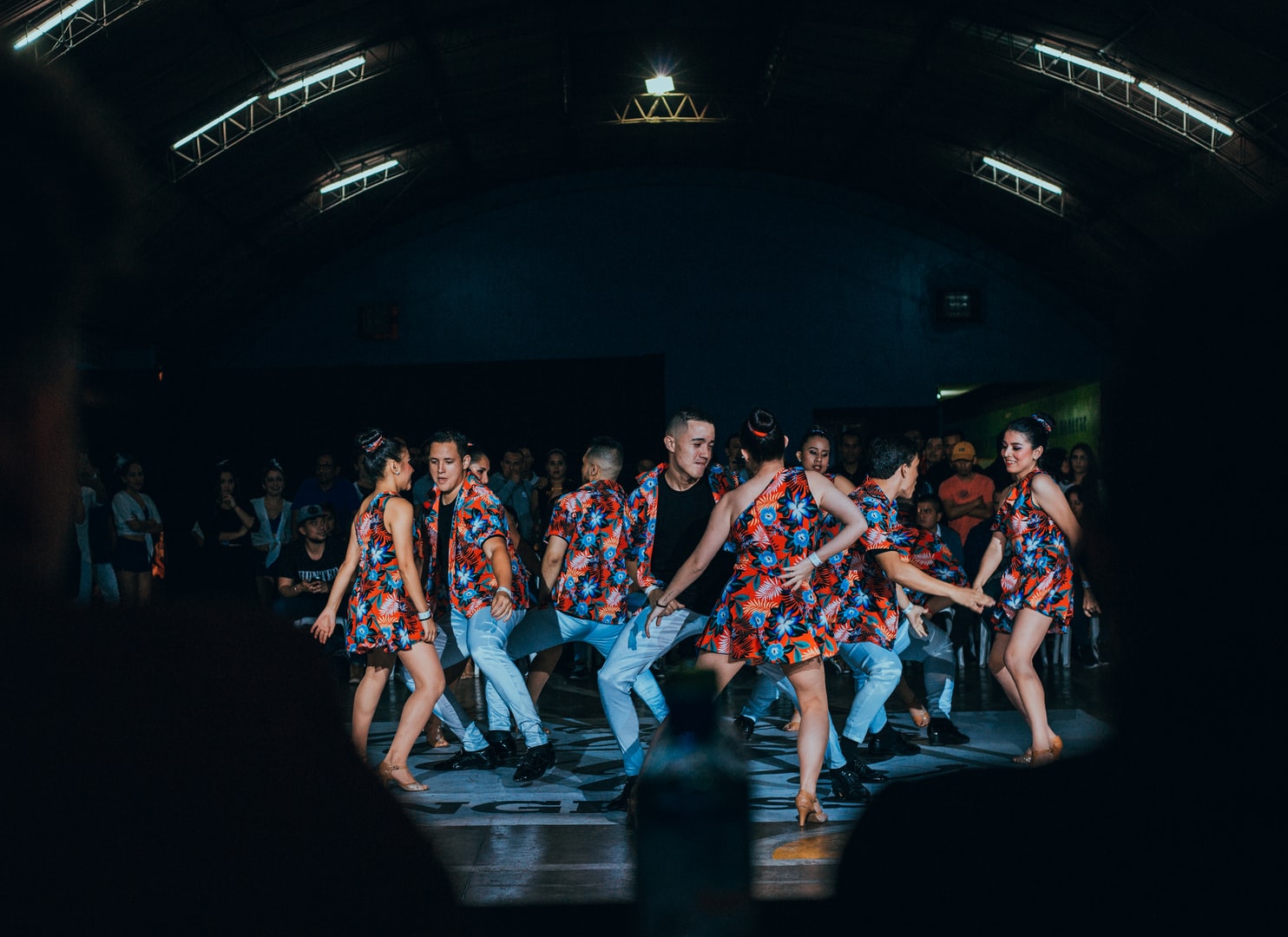
Latin/Salsa
Latin covers the most popular dance styles of Cuba & Haiti. Cha Cha & Mambo are high energy fun dances that get you moving. Rumba, is a slow smooth dance with a flirtatious quality. Also known as la Danza del Amor. These classes are offered once a year just prior the Montana Folk Fest.

Cha-Cha
The Cha-cha is the newest of the "Latin" dances. It is a true American dance, developed in the dance studios in the early 50s as a mid-tempo variant between Rumba (slow) & Mambo (fast). It is believed to have started as a step in Mambo. This developed into an entirely new dance. Cha-cha music is slightly slower than Mambo. The Cha-cha styling is very similar to Rumba and Mambo. Like most Latin dances, your weight is forward and most of the movement occurs below the ribcage. The steps are small, taken with the ball of the foot first to better execute the hip action commonly known as "Cuban motion". The Cha-cha is a flirty dance great for couples or just to catch someone's eye!
Mambo
Perez Prado is thought to have introduced the Mambo at La Tropicana nightclub in Havana in 1943. The dance appeared in the United States in New York's Park Plaza Ballroom, a favorite hangout of dance enthusiasts from Harlem. The Mambo gained in popularity and in the 1950s was taught in dance studios, resorts, and nightclubs in New York and Miami. In more recent times Mambo has also evolved into Salsa. Mambo tends to be sharper in the footwork with more time spent in closed position. Small steps are taken on the ball of foot first with the knees flexible to allow for the hip action known as “Cuban motion”. Mambo is the forefather of the Cha-Cha. It also shares many patterns in common with the other Latin dances. The Mambo is a fast paced, flirty dance with an outgoing personality.
Rumba
The word Rumba is a generic term, covering a variety of names for a type of West Indian music and dance. Although the main growth was in Cuba, there were similar dance developments that took place in other Caribbean islands and in Latin America generally. Traditionally, the music was played with a staccato beat. Traditionally, the native Rumba folk dance is very sexual and danced extremely fast with exaggerated hip movements. Today's Rumba is danced very slowly and has romantic, flirtatious overtones. It is danced using a Slow Quick-Quick rhythm and features an exaggerated use of “Cuban motion” (hip movements) and fluid arm-styling. The Rumba is a spot dance like most of the Latin dances, which means that it does not travel around the room like the Foxtrot or Waltz.
Salsa
Salsa covers the lively dances from the Dominican Republic, Merengue & Bachata. These dances are great to mix into your Latin styles and make one caliente Salsa.
For More Class INformation
Visit Discount Dance Supply for a wide variety of dancewear choices.
Receive 5% off your order each time & an additional 10% off your first purchase with our Teacher ID.
Teacher ID#
TP33429